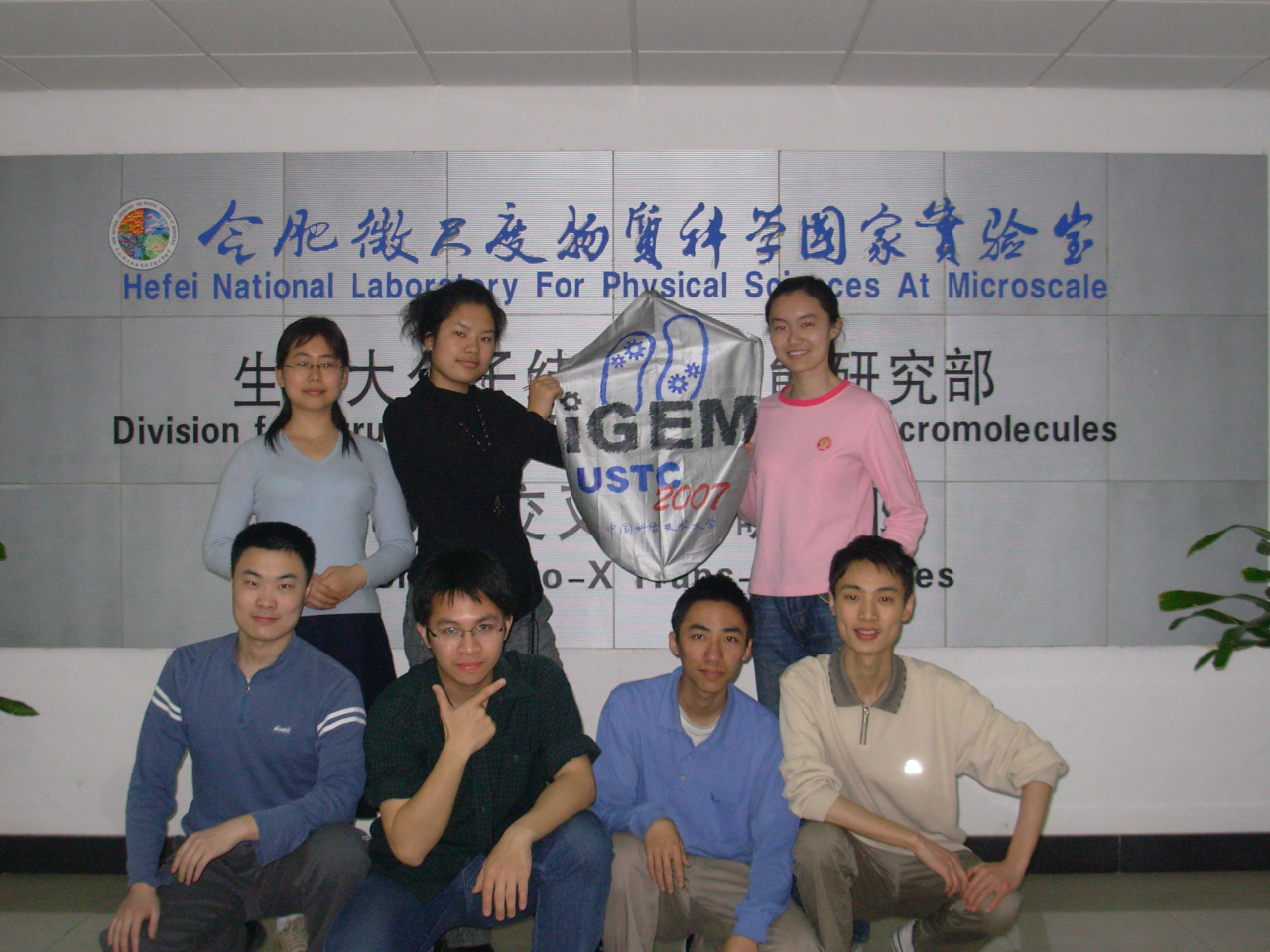USTC
From 2007.igem.org
m (→Our Project:<BR>Extensible Logic Circuit in Bacteria) |
m (→Our Project:<BR>Extensible Logic Circuit in Bacteria) |
||
| Line 18: | Line 18: | ||
=== Our Project:<BR>Extensible Logic Circuit in Bacteria === | === Our Project:<BR>Extensible Logic Circuit in Bacteria === | ||
| - | Artificial Bio-Logic Circuit is composed of "logic gates" and "wires" like Digital Electronic Circuits. Though we have been enjoying the advantages of ultra-large-scale electronic circuits in modern life, we still cannot implement a somewhat small-scale circuit in vivo with several levels of gates. | + | Artificial Bio-Logic Circuit is composed of "logic gates" and "wires" like Digital Electronic Circuits. Though we have been enjoying the advantages of ultra-large-scale electronic circuits in modern life, we still cannot implement a somewhat small-scale circuit <i>in vivo</i> with several levels of gates. |
Our project is to provide a new method for building up a fully extensible bio-logic circuit in bacteria. A small fragment of DNA containing cis-acting elements, favored for its small scale and potential to implement complex logic computation <i>in vivo</i>, can be systematically built up and act as a gate. Meanwhile, artificial repressors with highly-specific DNA-recognition regions are able to transmit signals without mutual interference, just as enameled wires. In this way, a circuit can be constructed regardless of the number of logic gates and the layout of the wires. | Our project is to provide a new method for building up a fully extensible bio-logic circuit in bacteria. A small fragment of DNA containing cis-acting elements, favored for its small scale and potential to implement complex logic computation <i>in vivo</i>, can be systematically built up and act as a gate. Meanwhile, artificial repressors with highly-specific DNA-recognition regions are able to transmit signals without mutual interference, just as enameled wires. In this way, a circuit can be constructed regardless of the number of logic gates and the layout of the wires. | ||
Revision as of 03:10, 27 October 2007
Today = new Date(); Jamboree = new Date("November 3, 2007"); msInADay = 1000 * 60 * 60 * 24; display = Math.floor((Jamboree.getTime() - Today.getTime())/msInADay); document.write(" " + display +" "); // </script></html>days left until the Jamboree! </font> -->
Our Project:
|
From left to right
|
Project
|
Members
3 Undergraduates:
3 Faculty Advisors: |
Statistics
123 Parts Submitted
11 Novel Artificial Repressors
~ 130 DNA Strands Sequenced > 5000 Colonies Screened ~ 400 Quantitative Assays
|
Resources |
Gallery[http://sg.ustc.edu.cn/mediawiki/index.php/IGEM_USTC_2007:USTCPhotos USTC Photos] [http://sg.ustc.edu.cn/mediawiki/index.php/IGEM_USTC_2007:HuangshanPhotos Huangshan Mountain] |
Links[http://partsregistry.org/cgi/partsdb/pgroup.cgi?pgroup=iGEM2007&group=USTC Parts Made by USTC iGEM 2007] [http://partsregistry.org iGEM Standard Parts' Catalog ] [http://www.ustc.edu.cn Univ. of Sci. and Tech. of China ] |

